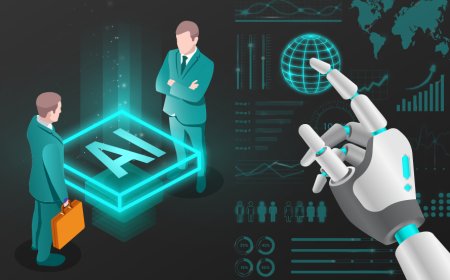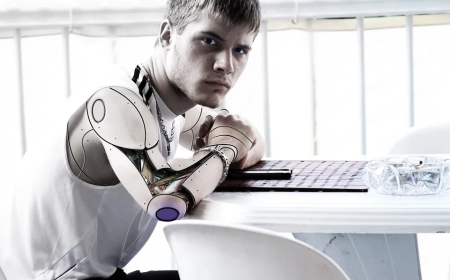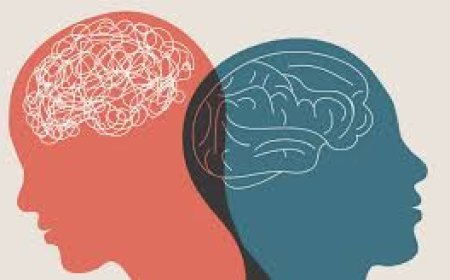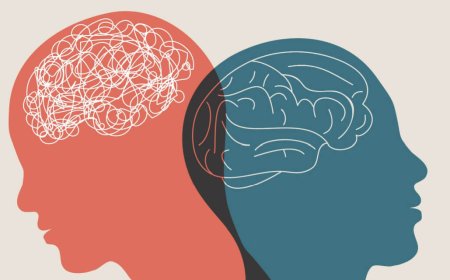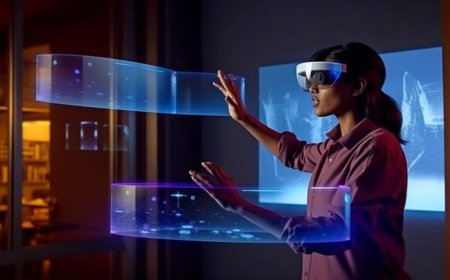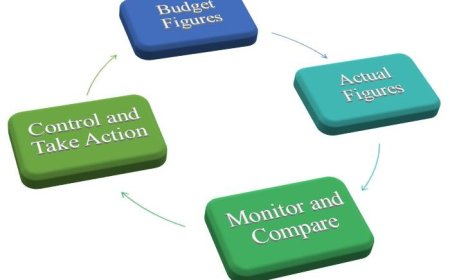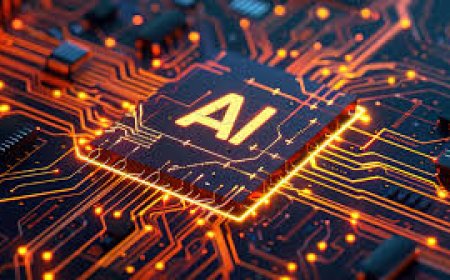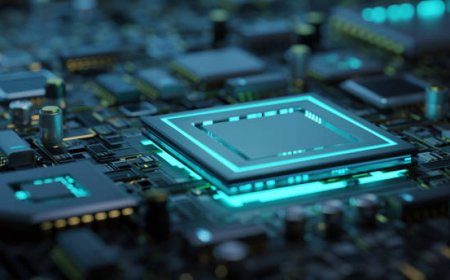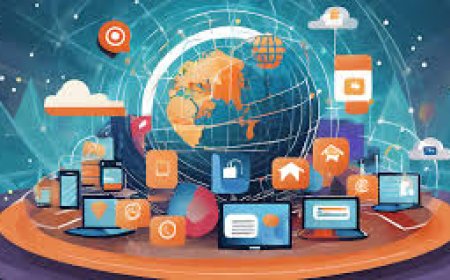Virtual and Augmented Reality: Transformative Technologies in Modern Society
Explore the transformative impact of virtual and augmented reality on modern society. Discover how these technologies enhance education, healthcare, and entertainment while addressing challenges and ethical considerations.
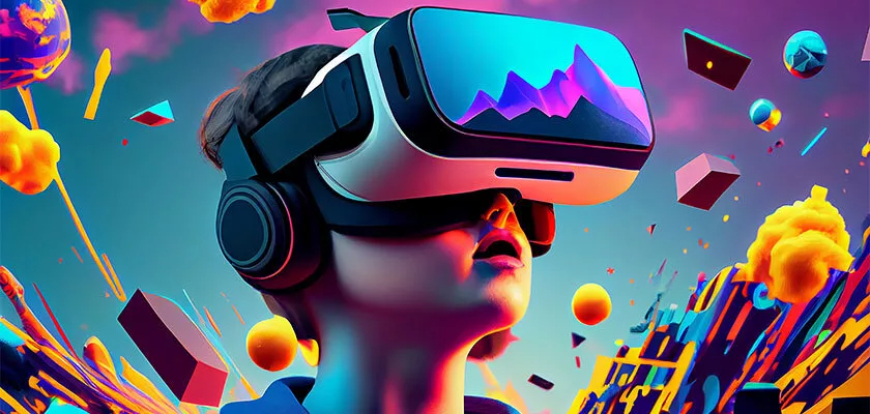
Introduction
Virtual Reality (VR) and Augmented Reality (AR) are at the forefront of technological innovation in contemporary society. Both have gained traction beyond their initial applications in gaming and entertainment, emerging as transformative technologies with implications across various sectors, including healthcare, education, marketing, and entertainment. By creating immersive experiences or augmenting the real world, VR and AR redefine how individuals interact with information, environments, and each other. This essay will explore the key features of VR and AR, examine their applications in modern society, discuss the challenges they face, and evaluate their potential for further societal transformation.
Key Features of VR and AR
At their core, VR and AR leverage advanced computing power, graphics rendering, and sensory feedback to create engaging user experiences. VR immerses users in a fully digital environment, often requiring specialized hardware such as headsets and motion controllers. This complete immersion allows users to explore virtual worlds that can be both fantastical and hyper-realistic. Conversely, AR enhances the real world by overlaying digital content onto the physical environment, typically through devices like smartphones or smart glasses. This blending of the digital and physical realms allows for interactive experiences that are contextually relevant and immediately engaging.
Applications in Modern Society
The applications of VR and AR are vast and varied. In healthcare, VR is revolutionizing surgical training and patient therapy, providing simulations that enhance skill acquisition and emotional healing. In education, AR can transform traditional learning methods, enabling students to visualize complex concepts through interactive models and simulations. Marketing professionals are also harnessing these technologies to create immersive brand experiences, allowing consumers to engage with products in novel ways. The entertainment industry continues to innovate with VR and AR, offering audiences unprecedented levels of interactivity and engagement.
Challenges and Future Potential
Despite their promising applications, VR and AR face significant challenges. Issues such as technological accessibility, privacy concerns, and the potential for addiction must be addressed to ensure these technologies can be integrated responsibly into society. Furthermore, the need for standardized protocols and cross-platform compatibility remains a barrier to widespread adoption.
Looking ahead, the potential for VR and AR to transform society is immense. As these technologies continue to evolve, they will likely foster new forms of communication, collaboration, and creativity. By bridging the gap between the digital and physical worlds, VR and AR have the capacity to enhance human experiences and redefine our interactions with the environment and each other, paving the way for a more interconnected and immersive future.
Understanding Virtual Reality and Augmented Reality
-
Virtual Reality Virtual Reality (VR) is a transformative technology that engulfs users in a meticulously crafted, computer-generated environment. By leveraging advanced VR headsets equipped with sophisticated motion tracking capabilities, users can navigate through richly detailed worlds that mimic real-life scenarios or delve into entirely imaginative realms. This immersive experience is further enhanced by a combination of sensory feedback mechanisms, including high-definition visuals, spatial audio, and haptic responses that simulate touch. As a result, users often report a remarkable sense of presence, making them feel as though they are truly inhabiting the virtual space. This profound immersion has far-reaching applications, from gaming and entertainment to training simulations in fields such as medicine, aviation, and military operations. By replicating high-stakes situations in a controlled environment, VR provides a safe platform for learning and skill development, ultimately improving performance and decision-making in real-world contexts.
-
Augmented Reality In contrast, Augmented Reality (AR) enriches the real world by superimposing digital information onto one’s immediate environment. This is accomplished through devices such as smartphones, tablets, or specialized AR glasses, which utilize cameras and sensors to identify and interpret the physical surroundings. By layering virtual elements—ranging from 3D models and animations to informative text—AR enhances the user’s perception and interaction with their environment. This technology is particularly valuable in sectors such as education, where it can transform traditional learning by providing interactive experiences that deepen understanding. For example, students can visualize complex anatomical structures in 3D or explore historical landmarks in their actual locations through AR applications. Additionally, AR has made significant strides in retail, allowing consumers to virtually try on clothing or visualize how furniture would look in their homes before making a purchase.
Both VR and AR represent significant advancements in how we interact with digital content, each offering unique benefits and experiences. As these technologies continue to evolve, they promise to redefine our understanding of reality, creating new avenues for engagement, education, and entertainment. The integration of VR and AR into daily life not only enhances personal experiences but also holds the potential to revolutionize industries, fostering innovation and creativity in ways previously thought impossible.
Applications of VR and AR in Modern Society
The versatility of VR and AR technologies has led to widespread adoption across multiple domains:
-
Healthcare Both VR and AR hold significant promise in the healthcare field. VR can provide medical professionals with simulated training environments, allowing them to practice surgical procedures without risk to patients. Additionally, VR has been effective in pain management by immersing patients in calming environments during distressing medical procedures. On the other hand, AR assists surgeons in real-time by overlaying critical information onto their field of vision during operations, enhancing precision and reducing risk. Beyond surgery, AR can also facilitate patient education by allowing individuals to visualize their medical conditions and treatment options, fostering a deeper understanding and engagement in their healthcare journey.
-
Education and Training In education, VR creates immersive learning experiences that transport students to historical eras, scientific environments, or complex abstract concepts. For instance, students can walk through ancient cities or interact with 3D models of molecules. AR enhances traditional learning by providing interactive textbooks or allowing students to visualize complex phenomena, thus helping to reinforce understanding. Furthermore, vocational training programs can utilize VR simulations to prepare students for real-world challenges in fields such as engineering, aviation, and emergency response, ensuring they are well-equipped for their future careers.
-
Marketing and Retail VR and AR have transformed marketing strategies, allowing businesses to offer virtual experiences of products before purchase. In retail environments, AR applications empower consumers to visualize how furniture would look in their homes or try on clothing items virtually. These technologies enable personalized and engaging shopping experiences, driving customer engagement and satisfaction. Moreover, brands are leveraging AR to create interactive advertisements that captivate audiences, enhancing brand loyalty and encouraging consumer interaction.
-
Entertainment and Gaming The entertainment industry has seen a tremendous leap forward with the integration of VR and AR. Gaming experiences have become more immersive, allowing players to engage in virtual worlds that respond to their actions and decisions. Additionally, AR applications, such as Pokémon GO, have turned the physical world into an interactive playground, demonstrating the potential of blending gaming with the real landscape. Beyond gaming, VR is being employed in film and storytelling, providing audiences with a more engaging narrative experience that transcends traditional media.
-
Real Estate In the real estate sector, VR and AR are revolutionizing property viewing and sales processes. VR allows potential buyers to take virtual tours of properties from the comfort of their homes, providing an immersive experience that traditional photographs cannot match. AR enhances property listings by overlaying information about features, dimensions, and nearby amenities directly onto the physical space, aiding buyers in making informed decisions. This integration of technology not only streamlines the buying process but also enhances overall customer satisfaction.
As VR and AR continue to evolve, their applications across various sectors will undoubtedly expand, reshaping how we interact with the world around us.
Challenges Facing VR and AR Technologies
Despite the numerous benefits and potential applications, VR and AR face significant challenges that could impede their widespread adoption.
-
High Costs The development and implementation of high-quality VR and AR technologies can be costly, both for producers and consumers. Expensive hardware requirements, such as VR headsets and AR glasses, can limit accessibility, particularly for smaller enterprises and individuals. Moreover, the ongoing expenses related to software updates and maintenance can further strain budgets, deterring potential users from investing in these immersive technologies. As a result, the market remains skewed toward affluent consumers and large corporations, creating a divide that may stifle innovation and limit the diversity of applications.
-
Technical Limitations Many VR and AR experiences require robust computing power and depend on advanced hardware and software systems. Issues like latency, low resolution, insufficient tracking, and stability can detract from the user experience and hinder technological advancement. For instance, latency can disrupt the immersive experience, leading to frustration among users. Furthermore, the lack of standardization in hardware and software can create compatibility issues, making it difficult for developers to create universally accessible applications. This fragmentation can slow down the pace of innovation and limit the potential for cross-platform experiences.
-
User Experience and Health Concerns Prolonged use of VR can lead to discomfort, including dizziness, nausea, and eye strain, often termed "motion sickness." Manufacturers are required to prioritize user experience through better design and technology to mitigate these effects. This includes developing adaptive hardware that can accommodate various user preferences and physiological differences. Additionally, creating content that encourages short, engaging sessions rather than prolonged immersion can help users enjoy the benefits of VR without suffering adverse effects.
-
Privacy and Ethical Issues With AR applications capturing real-world images and data, concerns about privacy and data security arise. Ethical considerations surrounding the collection and use of personal data, as well as the potential for misuse or harm, require careful regulation and oversight. The intersection of technology and ethics necessitates a proactive approach from developers and policymakers alike. Establishing transparent data practices and ensuring users have control over their information can build trust and foster a more responsible adoption of these technologies.
While VR and AR technologies hold tremendous promise across various sectors, addressing these challenges is crucial for their successful integration into everyday life. By focusing on affordability, technical improvements, user experience, and ethical standards, stakeholders can pave the way for a more inclusive and innovative future.
The Future of VR and AR in Society
The potential of VR and AR technologies is immense, and as they continue to evolve, they could further revolutionize various aspects of social life.
-
Enhanced Social Interaction As VR and AR create immersive and interactive environments, they could redefine social interactions by enabling virtual communities or connected experiences that foster relationships regardless of physical distance. This may lead to a new era of connectivity, collaboration, and shared experiences that transcend geographical boundaries. Imagine attending a virtual concert with friends from around the world, where you can interact in real time, share reactions, and even explore the venue together, all from the comfort of your home. Such experiences could cultivate deeper social bonds and a sense of belonging, effectively bridging the gap created by physical separation.
-
Continued Integration in Daily Life The proliferation of mobile devices and advancements in cloud computing may lead to increased integration of AR in everyday activities. From smart glasses providing navigation assistance to applications that enhance real-time communication with enriched visuals, AR could become a seamless component of daily life. For instance, grocery shopping could transform into an interactive experience where AR overlays nutritional information and recipe suggestions directly onto products, empowering consumers to make informed choices. This integration could extend to education, where AR applications enhance learning by bringing complex concepts to life, making knowledge more accessible and engaging.
-
Impact on Mental Health and Therapy The therapeutic potential of VR in mental health treatment continues to receive attention. Exposure therapy for conditions such as PTSD or phobias can be conducted effectively using VR environments. As research progresses, VR may become a vital component of mental health treatments, offering low-risk and controlled environments for patients. Furthermore, VR could enable remote therapy sessions, allowing individuals to access mental health support from the comfort of their homes while still experiencing the benefits of immersive environments designed to aid their recovery.
-
Evolution of Workspaces In the context of remote work, VR can facilitate virtual offices where employees collaborate from diverse locations in shared virtual spaces. The use of AR can enhance work meetings by overlaying information on physical materials, promoting a hybrid work model while maintaining productivity. As organizations adapt to this new landscape, the ability to create virtual representations of projects or products could streamline workflows and enhance creativity, enabling teams to visualize concepts in real time. This evolution of workspaces may lead to increased job satisfaction and improved work-life balance, as employees find themselves in environments that cater to their needs.
The future of VR and AR holds transformative potential for society, reshaping how we interact, learn, heal, and work, ultimately fostering a more connected and enriched human experience.
Conclusion
Virtual and Augmented Reality are transformative technologies that hold the potential to reshape various domains of modern society. Their applications in healthcare, education, marketing, entertainment, and real estate demonstrate their versatility and effectiveness in enhancing experiences and improving outcomes. In healthcare, for instance, VR simulations can provide medical professionals with immersive training experiences, allowing them to practice complex procedures in a risk-free environment. Similarly, AR can assist in surgical operations by overlaying critical information directly onto a surgeon's field of view, thereby increasing precision and reducing errors.
In the realm of education, these technologies are revolutionizing how knowledge is imparted. VR can transport students to historical events or distant planets, fostering a deeper understanding through experiential learning. Meanwhile, AR can bring static textbooks to life, engaging learners in interactive and dynamic ways that traditional methods simply cannot match. This immersive approach not only enhances retention but also caters to diverse learning styles, making education more inclusive.
The marketing sector is also witnessing a paradigm shift, as brands leverage VR and AR to create engaging and memorable customer experiences. Virtual showrooms allow consumers to interact with products in a three-dimensional space, while AR applications enable users to visualize how products fit into their lives before making a purchase. This not only drives sales but also builds stronger emotional connections between brands and consumers.
In entertainment, VR and AR are redefining how we consume content. From immersive gaming experiences that place players at the center of the action to interactive storytelling that allows audiences to shape the narrative, these technologies are pushing the boundaries of creativity and engagement. As content creators harness the power of VR and AR, the line between reality and imagination continues to blur, inviting audiences to explore new realms of possibility.
Despite facing challenges such as costs, technical limitations, and ethical concerns, the future of VR and AR is bright. As these technologies continue to develop, they will further impact how we interact, learn, and socialize, making the possibilities for their application virtually limitless. In this dynamic landscape, embracing the transformative power of VR and AR will be essential for individuals and organizations seeking to thrive in the 21st century. By fostering innovation and collaboration, we can unlock the full potential of these technologies, paving the way for a future where the boundaries of reality are expanded, and human experiences are enriched.
What's Your Reaction?
 Like
0
Like
0
 Dislike
0
Dislike
0
 Love
0
Love
0
 Funny
0
Funny
0
 Angry
0
Angry
0
 Sad
0
Sad
0
 Wow
0
Wow
0
